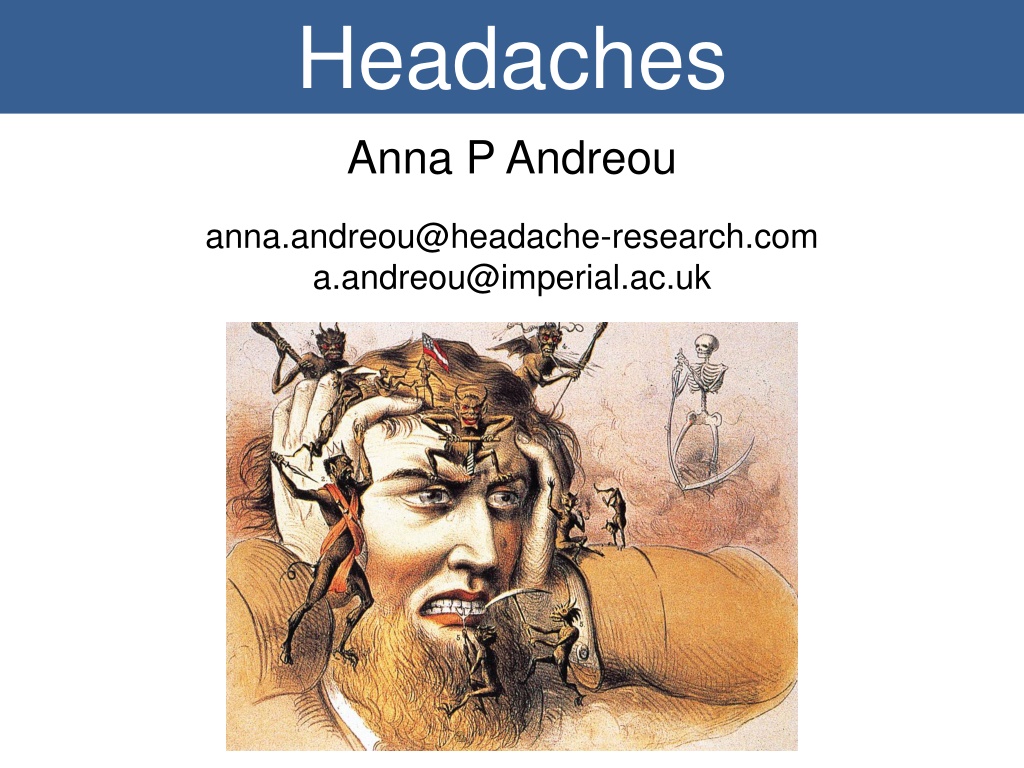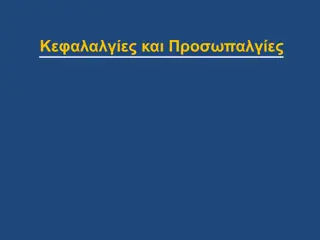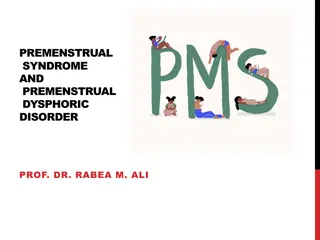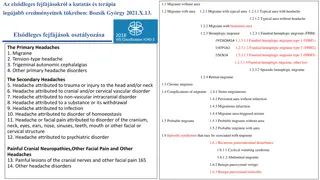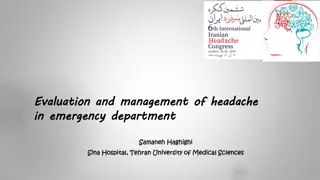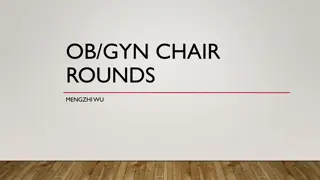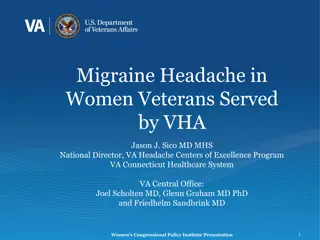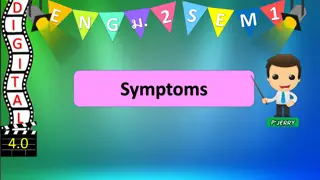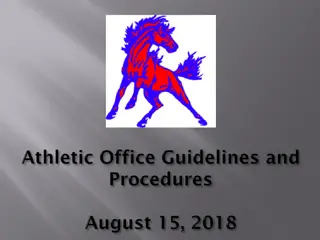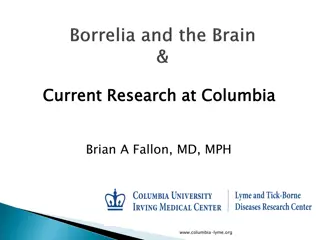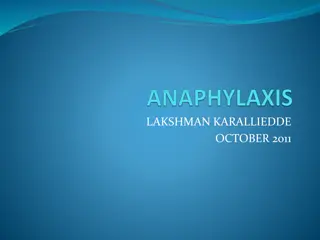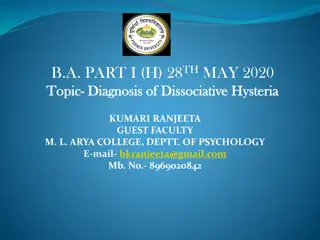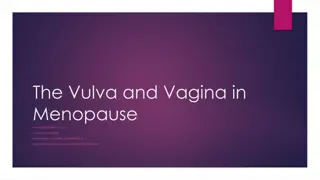Understanding Headaches: Classification, Symptoms, and Approach to Treatment
Headaches are a common health issue affecting a significant portion of the global population. This content provides insights into different types of headaches, including primary and secondary classifications. It discusses the importance of accurate diagnosis through history-taking, physical examinations, and neurological assessments. Additionally, it highlights the significance of distinguishing between primary and secondary headaches, along with the potential underlying conditions that may cause secondary headaches. Understanding the nature of headaches is essential for effective treatment and management.
Download Presentation

Please find below an Image/Link to download the presentation.
The content on the website is provided AS IS for your information and personal use only. It may not be sold, licensed, or shared on other websites without obtaining consent from the author. Download presentation by click this link. If you encounter any issues during the download, it is possible that the publisher has removed the file from their server.
E N D
Presentation Transcript
Headaches Anna P Andreou anna.andreou@headache-research.com a.andreou@imperial.ac.uk
Headache is not a modern disease British Museum
Headache Disorders headaches Eastern Mediterranean South-East Asia Western Pacific Africa Americas Europe All 21.6 % 46.5% 78.8% 56.1% 63.9% 52.8%
Preview.... What is a headache? Headaches Classification Secondary Headaches Red Flags Medication Overuse Headaches Primary Headaches Tension Type Headache Trigeminal autonomic cephalalgias
Headache A headache or cephalgia is pain anywhere in the region of the head or neck Where is the pain felt? Trigeminal ganglion
Headaches Classification International Headache Society Classification (IHSD) 2nd Edition (2004) 1. Primary headaches 2. Secondary headaches 3. Cranial neuralgias, facial pain and other headaches http://ihs-classification.org/en
International Classification of Headache Disorders (ICHD) International Headache Society, 2nd edition , 2004 IHS code 1. 2. Primary headaches 3. 4. 5. 6. 7. 8. Secondaryheadaches 9. 10. 11. 12. Central neuralgias, central and primary facial pains, other headaches 13. 14.
How to approach a patient with a headache Distinguishprimary from secondary headache disorders Accurate history, physical examination, neurological examination if
Secondary Headaches Occur as a consequence of an underlying condition (e.g. Trauma, Structural lesion, Vascular disorder, Infection) Can be life threatening Complete neurologic examination Usually treatable- treat underlying condition
Secondary Headaches International Headache Society, 2nd edition , 2004 Headache attributed to head and/or neck trauma e.g. head injury, traumatic intracranial haematoma (epidural/subdural), whiplash injury, craniotomy Headache attributed to cranial or cervical vascular disorder e.g. ischeamic stroke, intracerebral/subarachnoid haemorradge, vascular malformation, cerebral venous thrombosis Headache attributed to non-vascular intracranial disorder e.g. intracranial hypertension, post-dural puncture, intracranial neoplasm, epileptic seizures Headache attributed to a substance or its withdrawal
Secondary Headaches International Headache Society, 2nd edition , 2004 Headache attributed to infection e.g. intracranial infection-meningitis, systemic infection, HIV/AIDS Headache attributed to disorder of homoeostasis e.g. hypoxia/hypercapnia, arterial hypertension, hypothyroidism, fasting Headache or facial pain attributed to disorder of cranium, neck, eyes, ears, nose, sinuses, teeth, mouth or other facial or cranial structures e.g. cervicogenic headaches Headache attributed to psychiatric disorder e.g. somatisation/phychotc disorders
Headache attributed to a substance or its withdrawal Acute substance exposure induced headache: NO-donors Alcohol PDE inhibitors Monosodium glutamate* Histamine CGRP Cocaine Cannabis Medication Overuse Headache: Ergotamine Triptans Analgesics (NSDAIS, paracetamol) Opioids Substance withdrawal Caffeine Opioids Oestrogen
Primary Headaches The headache itself is the primary problem, with no identifiable underlying cause DISORDER Most common type (~ 90%) Episodic (Usually recurrent) Normal neurologic exam Treatment should be provided for the headache
Primary Headaches Tension-type headache Migraine Cluster headache and other trigeminal autonomic cephalalgias Other primary headaches e.g. stabbing headache, cough headache, orgasmic headache, thunderclap headache
Tension Type Headache (TTH) Very common (~60-80%; Women : Men 3:1) Pain characteristics: Bilateral tightness/pressure Mild to moderate Not aggravated by movement Duration: 30 min to several days No nausea, photophobia and phonophobia 3% of the population has chronic TTH ( 15 days, 6 months)
Pathophysiology of TTH Unknown Absence of excessive muscle contraction and muscle ischemia Episodic TTH: possible peripheral sensitization Chronic TTH: possible central
Treatment options for TTH Acute Treatment Analgesics (aspirin, paracetamol), NSAIDs, triptans * MOH Preventive Treatment Amitriptyline (tricyclic anti-depressant)
Trigeminal Autonomic Cephalalgias (TACs) Cluster Headache Paroxysmal Hemicrania* Short-lasting Unilateral Neuralgiform Headache Attacks with comjuctival injection and Tearing (SUNCT) * complete relief by indomethacin
Trigeminal Autonomic Cephalalgias Duration (min) 4 15 30 180 Paroxysmal Hemicrania SUNCT Cluster Headache Frequency (attacks/day) 0.5 - 8 > 5 3 - 200 Cluster Paroxysmal SUNCT Headache Hemicrania
Cluster Headache (CH) 0.5-1% prevalence (Women:Men 1:4.3) Pain characteristics: At least one ipsilateral autonomic feature Remission period
TACs Pathophysiology- Hypothalamic mulfunction? Hypothalamic activation EffectiveDBS in posterior hypothalamus May A. Lancet 2005; 366:847
Treatment options for Cluster Headache Acute Treatment 100% Oxygen inhalation Sumatriptaninjection or nasal spray (5-HT1B/D agonist) Preventive Treatment Verapamil (L-type calcium channel blocker) Ergot alkaloids Lithium salt (Li+)
Treatment options for Cluster Headache Surgical treatment? Medically intractable cases (10-20%) Deep Brain Stimulation (DBS) Multi-center uncontrolled studies Intended site of stimulation: Posterior hypothalamus > 60% efficacy Safe Need for large, randomized, controlled, and double-blinded trials Occipital Nerve Stimulation Uncontrolled studies Good efficacy Less invasive than DBS
International Classification of Headache Disorders (ICHD) International Headache Society, 2nd edition , 2004 IHS code 1. 2. Primary headaches 3. 4. 5. 6. 7. 8. Secondaryheadaches 9. 10. 11. 12. Central neuralgias, central and primary facial pains, other headaches 13. 14.
